Posted by Al Voth on 2022 Aug 25th
TORQUE WRENCH BASICS
I'm old enough to remember when gun-specific torque wrenches weren't available. However, as we've become more obsessed with accuracy and the technical aspects of shooting, they've almost become a must-have item, and now I own several of them. While many people own and use torque wrenches on their firearms, not everyone uses them correctly. Let's look at torque wrenches and touch on the basics of properly using a torque wrench.
THE WHY
For those unfamiliar with torque wrenches, it's necessary to define them. The simplest definition is a tool for adjusting the tightness of screws, nuts, and bolts to the desired value. We want to tighten these fasteners to a specific value because fasteners that are too loose can back out and fall off. In contrast, overtightened fasteners can damage the item we're working on, strip threads, or break completely. Additionally, sometimes varying fastener tightness levels within a specific range can change how well a rifle shoots.
More: TUNING A RIMFIRE RIFLE WITH A TORQUE WRENCH
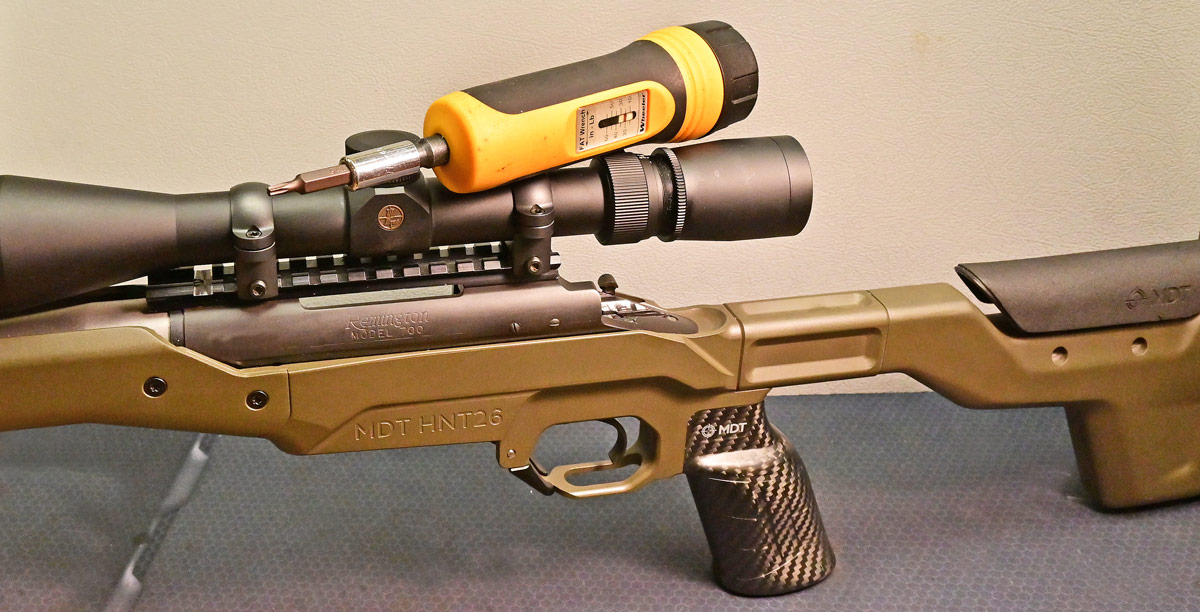
A torque wrench is invaluable for installing scopes, scope rings, and scope mounts. A wrench should allow the end user to adjust the torque setting.
TORQUE, NEWTONS AND INCH POUNDS
Torque values for gun work, exclusive of barrel changing, are measured in inch-pounds or newton-meters if you're metrically inclined. Wrenches ranging from 10 – 65 inch-pound will cover most gun-related needs. However, if barrel swapping is in your future, a second torque wrench capable of reading in foot-pounds will be helpful. A wrench capable of accepting typical ¼-inch hex shank bits is needed, as well as a good assortment of bits to cover the many different types and sizes encountered in gun work.
MATERIAL AND TORQUE
The first step in torque wrench use is determining the specific value to which the fastener needs to be tightened. Take note of the material. If the substrate is aluminum, a torque value much lower than one suitable for steel is indicated. Also, fasteners with fine thread require a lower value than fasteners with large, coarse thread.
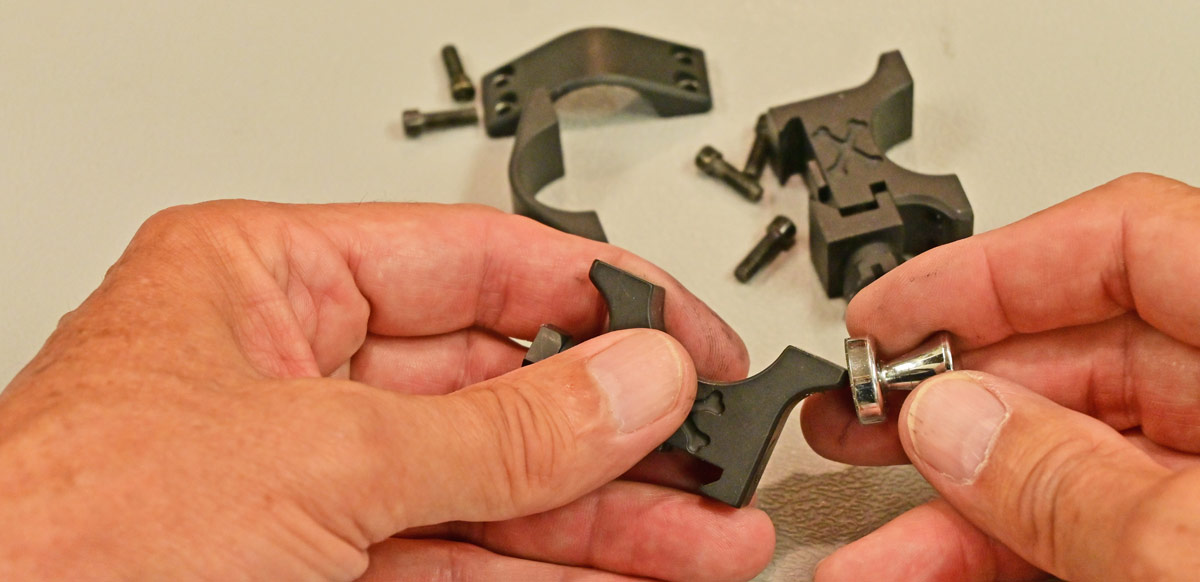
Use a magnet to determine whether the parts you're dealing with are steel or aluminum.
There are formulas to determine these values, but they are complicated. The easiest way to find a value for a specific piece of hardware is to refer to user manuals, torque specifications or a company's online resources. I've recently seen scope ring manufacturers etch torque specifications directly onto the rings. That way, there's no excuse for stripping out those holes. If there's no documentation to consult, I like to start with a magnet and confirm with it whether I'm dealing with aluminum or steel. Then, I refer to the following chart for some basic values.
SCOPE SCREWS TORQUE SETTINGS
- Base screws: 30 inch-lbs max.
- Windage screws: 30-40 inch-lbs max.
- Ring screws: Aluminum: 10-15 inch-lbs max.
- Ring screw: Steel: 15-20 inch-lbs max.
RIFLE GUARD SCREWS TORQUE SETTINGS
- Wood, fiberglass, or synthetic stock, without pillars: 40 inch-lbs max.
- Wood, fiberglass, or synthetic stock, with pillars: 65 inch-lbs max.
- Chassis stocks with aluminum frame: 65 inch-lbs max.
HOW TO USE A TORQUE WRENCH
With a torque value determined, it's time to select the correct size bit for the fastener being tightened. I use an interchangeable bit screwdriver (not the torque wrench) to insert and partially tighten the fastener. With that done, it's time to break out the torque wrench. Most adjustable types have a collar to lock the setting in place. This collar must be retracted and the wrench dialed to the correct value. Ensure the collar snaps back to the locked position and the wrench is ready to use. Now, tighten the fastener until you feel the wrench slip, usually with an audible click. That fastener is now torqued to the correct value.
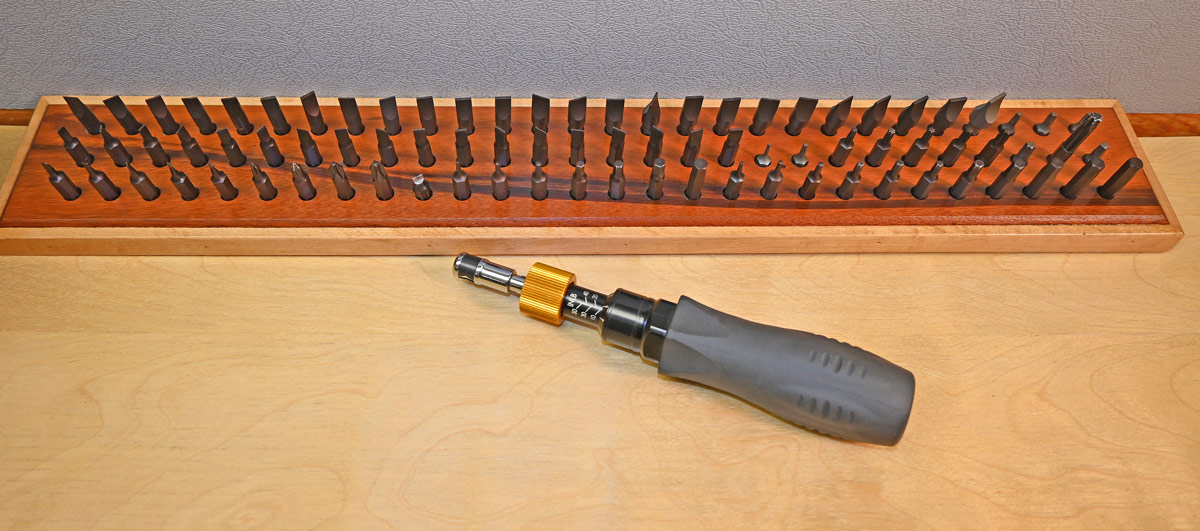
Gun work requires a broad selection of ¼-inch hex bits.
TORQUE WRENCH MAINTENANCE
The most common offense in torque wrench use is leaving the wrench set at the most recently used value. Torque wrenches must always be returned to the lowest possible setting after use and before storage to maintain the correct calibration. Failing to do this keeps the stout spring which provides the correct tension value under pressure, and long-term storage in this state can cause it to produce incorrect values. For example, a setting of 20 inch-pounds may only produce an actual value of 15 inch-pounds. So, always, without fail, return an adjustable value torque wrench to its lowest possible setting.
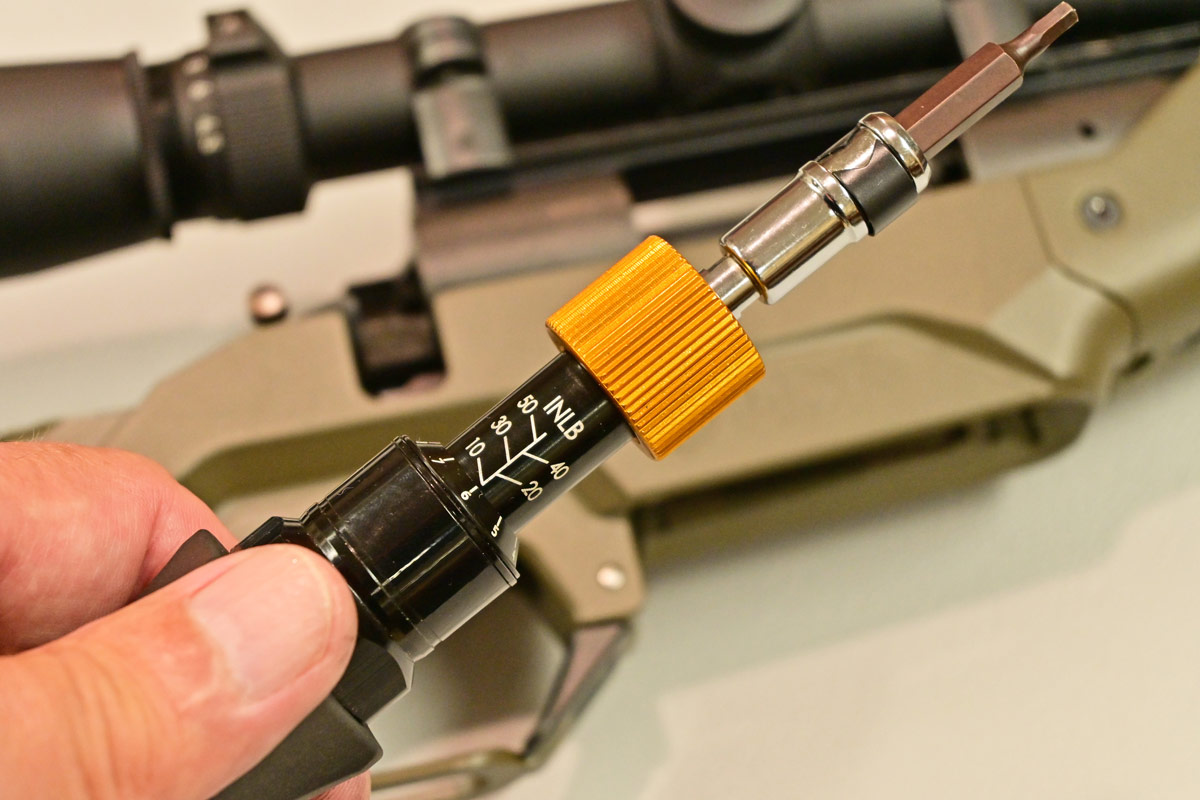
Always return a torque wrench to its lowest setting after use. Torque settings are in inch-pounds.
It's also worth mentioning that a torque wrench should never be used to loosen a fastener. Torque wrenches are designed to be used in one direction only—tightening. Always remember that torque wrenches are precision instruments requiring care in handling and storage. Look after one properly, and it will likely last a lifetime.
ADDITIONAL RESOURCES FROM MDT
- What are the torque specs for an MDT scope base?
- What are the torque specs on the MDT Premier Rings?
- What are the torque specs on the action screws for my Chassis?
- What are the torque specs on the MDT Elite Rings?
ABOUT THE AUTHOR
Al Voth calls himself a "student of the gun." Retired from a 35-year career in law enforcement, including nine years on an Emergency Response Team, he now works as an editor, freelance writer, and photographer, in addition to keeping active as a consultant in the field he most recently left behind—forensic firearm examination. He is a court-qualified expert in that forensic discipline, having worked in that capacity in three countries. These days, when he's not working, you'll likely find him hunting varmints and predators (the 4-legged variety).

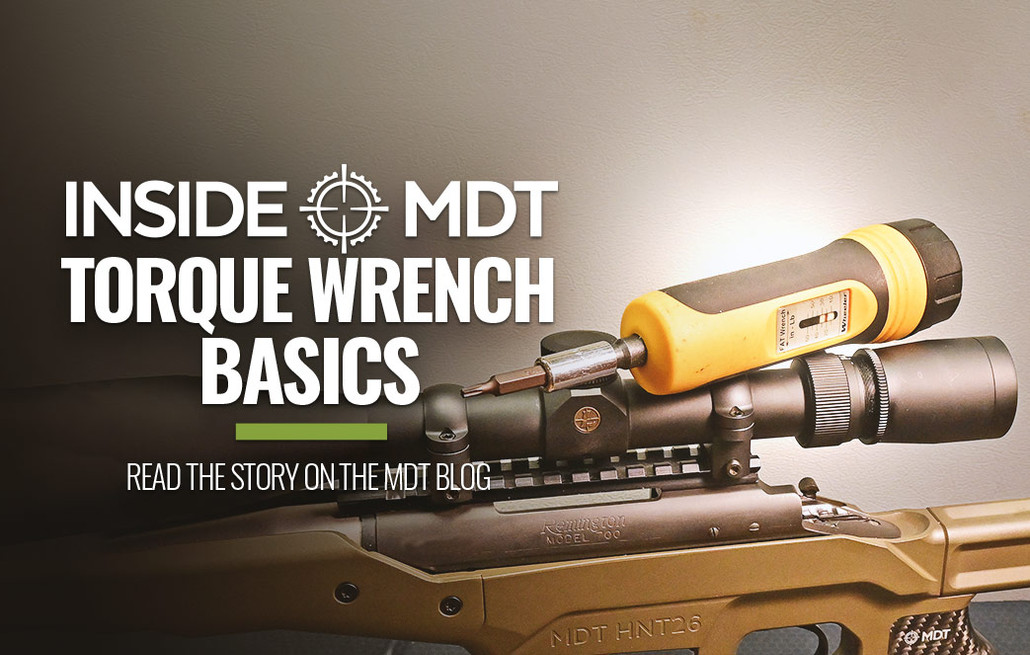
 CAD
CAD
 Euro
Euro
